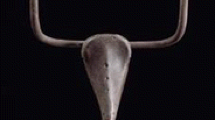Abstract
Enjoyment is frequently associated with acts of destruction. It is posited that enjoyment derived from observing or engaging in destruction is related to the stimulus characteristics of the object being destroyed. Specifically, the factors that determine a person's enjoyment of aesthetic stimuli should also affect one's response to destruction. In the present experiment one stimulus characteristic was studied—uncertainty concerning the breaking of a pane of glass. Subjects observed a film in which three panes of glass broke immediately upon being struck, but the fourth pane of glass broke on either the first strike (low uncertainty) or the third strike (high uncertainty). Results indicated that subjects enjoyed the breaking more in the high-uncertainty condition, that is, when they were more uncertain about when the glass would break. The findings support the aesthetic theory of destruction and also have implications for design.
Similar content being viewed by others
References
Allen, V. L., & Greenberger, D. B. An aesthetic theory of vandalism.Crime and Delinquency, 1978,24, 309–321.
Allen, V. L., & Greenberger, D. B. Destruction and perceived control. In J. Singer & A. Baum (Eds.),Control and the environment. Hillsdale, N.J.: Erlbaum (in press).
Berlyne, D. E.Aesthetics and psychobiology. New York: Appleton-Century-Crofts, 1971.
Berlyne, D. E. (Ed.)Studies in the new experimental aesthetics: Steps toward an objective psychology of aesthetic appreciation. New York: Halsted, 1974.
Cohen, S. Property destruction: Motives and meaning. In C. Ward (Ed.),Vandalism. London: Architectural Press, 1973.
Ley, D., & Cybriwski, R. The spatial ecology of stripped cars.Environment and Behavior, 1974,6, 53–72.
Martin, J. M.Juvenile vandalism. Springfield, Ill.: Thomas, 1961.
Newman, O.Defensible space. New York: Macmillan, 1972.
Nunnally, J. C., Faw, T. T., & Bashford, M. B. Effect of incongruity on visual fixations in children and adults.Journal of Experimental Psychology, 1969,81, 360–364.
Wade, A. L. Social processes in the act of juvenile vandalism. In M. B. Clinard & R. Quinnery (Eds.),Criminal behavior systems. New York: Holt, Rinehart & Winston, 1967.
Zimbardo, P. G. The human choice: Individuation, reason, and order versus deindividuation, impulse, and chaos. In W. J. Arnold & D. Levine (Eds.),Nebraska Symposium on Motivation (Vol. 17). Lincoln: University of Nebraska Press, 1969.
Author information
Authors and Affiliations
Rights and permissions
About this article
Cite this article
Allen, V.L., Greenberger, D.B. Enjoyment of destruction: The role of uncertainty. J Nonverbal Behav 4, 87–96 (1979). https://doi.org/10.1007/BF01006353
Issue Date:
DOI: https://doi.org/10.1007/BF01006353




